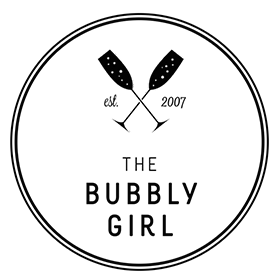“When you see a champagne ad, what does it show?” asks the Frenchman. He answers his own question. “A car, a pretty girl or some jewelry. But what does that have to do with what’s in the bottle?”
The Frenchman in question is Enguerrand Baijot, scion of the family that owns Champagne Lanson. He visited San Francisco this week for a tasting at The Bubble Lounge as part of the brand’s re-launch in the U.S. market.
He makes a good point; most champagne ads celebrate lifestyle, rather than flavor. The Lanson difference, Baijot says, is the way they emphasize their wine-making style which creates a uniquely fresh and bright tasting champagnes.

Enguerrand Baijot, Brand Director for Champagne Lanson, pouring Extra Age Bru at a recent launch party at The Bubble Lounge in San Francisco.
“Lanson is the only champagne that talks about what it going on inside the bottle,” Baijot says.
When it comes to flavor profile, it seems most champagnes are in one camp or another. They’re either quite austere, acidic and young tasting or they have the deep, toasty flavors that come with age. A rare handful, including Lanson, manage to capture both of those characteristics.
Since the house was founded by Jean-Baptiste Lanson in 1837, the key to this balanced flavor profile has been a combination of long-aging and the house style called non-malo.
“Lanson is a champagne that sings,” says Baijot. “It’s about purity and freshness.”
It’s kind of wine-geeky, but malolactic fermentation is a natural process that happens in winemaking after the sugar in the grape juice has been converted into alcohol. Wine grapes are full of bright, fresh malic acid that’s similar to the flavor of a green apple. During malolactic fermentation or ML, malic acid is converted into lactic acid, a rounder softer acid found in yogurt, butter and cheese.
Lanson cools their cuvèes before they’re bottled to become champagne, so that ML doesn’t happen. As the Champagne region gets warmer, which robs the grapes of their natural acidity, Baijot says he expects to see more champagne houses adopting their style.

Since Lanson champagnes are made without malolactic fermentation, they have a higher acidity that imparts a bright taste and makes them perfect for aging.
Lanson champagnes are predominantly made with Pinot Noir. And to make sure their wines have a delicious depth of flavor, all Lanson champagnes — from the entry-level NV Black Label to the top of the line Gold Label — are aged much longer than is required. Black Label is aged for three years while the Gold Label, Extra-Age Brut and Extra-Age Rosé are all laid down at least five years.
The Lanson Extra-Age Rosé with its lovely cranberry notes, is poured by the glass at all Alain Ducasse restaurants around the world. The recently-released 2002 Gold Label — a marvelous display of precociousness and maturity crafted exclusively from Grand Cru grapes — is being poured for all United Airlines international first-class passengers.
This summer, look for a new Lanson Extra-Age Blanc de Blancs and a White Label Sec Champagne, a slightly sweeter cuvée that highlights the fresh fruit flavors in the wine. Baijot says it’s designed to be featured in fruit-based cocktails, like Raspberry Champagne Mojitos and Kir Royales.
It’s hard to leave a Lanson tasting without being a smarter champagne drinker. But just in case, they share copies of The Little Black Book of Champagne, a concise guide to the champagne method, grapes and famous Bubbly Girls including Lily Bollinger, Marilyn Monroe and Kate Moss. Visit the L’Academie de Lanson website to order your complimentary copy of The Little Black Book of Champagne.



